Ruby red peacock - Aulonocara rubescens
Scientific name: Aulonocara rubescens
Common name: Ruby red peacock
Family: Cichlidae
Usual size in fish tanks: 10 - 12 cm (3.94 - 4.72 inch)
014
Recommended pH range: 7.5 - 8.5
Recommended water hardness: 16 - 24°N (285.71 - 428.57ppm)
0°C 32°F30°C 86°F
Recommended temperature range: 24 - 26 °C (75.2 - 78.8°F)
The way how these fish reproduce: Spawning
Where the species comes from: Africa
Temperament to its own species: peaceful
Temperament toward other fish species: aggressive to smaller
Usual place in the tank: Middle levels
Food and Feeding
The Ruby Red Peacock (Aulonocara rubescens) is an omnivore with a preference for high-quality meaty foods. A staple diet of quality flakes or cichlid pellets enriched with vitamins and minerals is essential. Supplement their diet with protein-rich treats such as brine shrimp, bloodworms, krill, and mysis shrimp. Feed small portions 2-3 times daily, ensuring all food is consumed to maintain water quality. Avoid feeding fatty or mammalian proteins like beef heart, as these can cause digestive issues.
Origin
Native to Lake Malawi in Africa, the Ruby Red Peacock inhabits sandy-bottomed regions near rocky outcrops. These environments are characterized by clear, oxygen-rich water with stable parameters, providing ideal conditions for foraging and breeding. Replicating these conditions in aquariums helps ensure their health and natural behaviors.
Sexing
Sexing Aulonocara rubescens is straightforward. Males display vibrant orange to red coloration throughout their body, often highlighted by metallic blue or white accents. Females, by contrast, are drab grey or brown. It is best to keep one male with several females to minimize aggression and prevent hybridization. Avoid mixing different Aulonocara species in the same tank to maintain genetic purity.
Breeding
Ruby Red Peacocks are maternal mouthbrooders. During breeding, the male establishes a territory and performs a vibrant courtship display to attract females. After spawning, the female collects the eggs in her mouth, where she incubates them for approximately 18-21 days. The male does not participate in rearing the young. Once the fry are released, they can be fed newly hatched brine shrimp or finely crushed flakes. Providing a separate breeding or grow-out tank can improve fry survival rates by minimizing predation.
Lifespan
With proper care, Aulonocara rubescens can live 5-8 years. Their longevity depends on maintaining stable water conditions, providing a nutritious diet, and ensuring a stress-free environment.
Tank Setup
To replicate their natural habitat, set up an aquarium with a minimum size of 200 liters (~50 gallons) for a small colony. Include plenty of rock structures to create hiding places and territories while leaving open swimming areas, especially in the mid and bottom regions of the tank. Use a fine sand substrate, as these cichlids enjoy sifting through it while foraging. Maintain the following water parameters for optimal health:
- pH: 7.5-8.5
- Hardness: 16-24°N (285.71-428.57 ppm)
- Temperature: 24-26°C (75.2-78.8°F)
Good filtration and regular water changes are essential to maintain water quality and oxygenation. Avoid strong water currents, as these fish prefer moderate flow.
Temperament and Tankmates
Ruby Red Peacocks are peaceful towards their own species but can display territorial aggression, especially toward smaller or similarly colored fish. Suitable tankmates include other peaceful Malawi cichlids of similar size, such as Placidochromis electra or Cynotilapia afra. Avoid keeping them with overly aggressive or boisterous species that may stress them. Providing visual barriers with rocks and caves can help reduce aggression and establish territories.
Short Description
The Ruby Red Peacock (Aulonocara rubescens) is a vibrant and peaceful cichlid species from Lake Malawi. Known for their striking red and orange coloration, they thrive in well-structured aquariums with sandy substrates and ample hiding spaces. Their manageable size and calm demeanor make them a popular choice among aquarists. With proper care, they are a rewarding addition to any cichlid community tank.
Picture
Special thanks to Marwin Lawrence for his picture.



 Thread-finned
Thread-finned 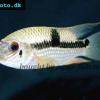 Acara
Acara  Yellow
Yellow  Patrick's
Patrick's  Blue
Blue  Green
Green 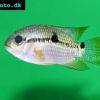 Acara
Acara  White
White  Compressed
Compressed 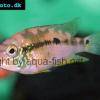 Pastel
Pastel  Midas
Midas  Red
Red  Bluemouth
Bluemouth  False
False 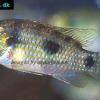 African
African  Agassiz's
Agassiz's  Banded
Banded 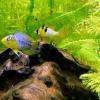 Yellow
Yellow  Cockatoo
Cockatoo  Blue
Blue  Blackstripe
Blackstripe  Highfin
Highfin  Redstripe
Redstripe  Threadfinned
Threadfinned  Macmaster’s
Macmaster’s 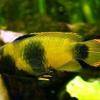 Panda
Panda  Norbert’s
Norbert’s 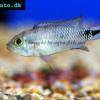 Blue
Blue  Thin-line
Thin-line  Three-striped
Three-striped  Viejita
Viejita 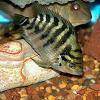 Flier
Flier  Archocentrus
Archocentrus  Convict
Convict  Seven
Seven  Spiny
Spiny  Oscar
Oscar  Sunshine
Sunshine  Chitande
Chitande  Firebird
Firebird  Midnight
Midnight  Lake
Lake  Sunshine
Sunshine  Aulonocara
Aulonocara  Nyasa
Nyasa  Grants
Grants  Aulonocranus
Aulonocranus  Chameleon
Chameleon  Benitochromis
Benitochromis  Orinoco
Orinoco  Yellow
Yellow 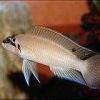 Brichard’s
Brichard’s  Guenther’s
Guenther’s  Southern
Southern  Cichla
Cichla 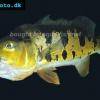 Peacock
Peacock  Chiseltooth
Chiseltooth  Bolivian
Bolivian  Red
Red  Many-pointed
Many-pointed  Jack
Jack  Red
Red  Three
Three 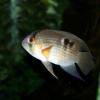 Keyhole
Keyhole  Azureus
Azureus  Red
Red  Jackson’s
Jackson’s  Crenicichla
Crenicichla  Honduran
Honduran  Blue-eye
Blue-eye  Afra
Afra 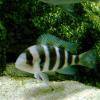 Frontosa
Frontosa  Slender
Slender  Malawi
Malawi  Chequerboard
Chequerboard  Checkerboard
Checkerboard  Malawi
Malawi  Ectodus
Ectodus  Tanganyika
Tanganyika  Canara
Canara  Green
Green  Rostratus
Rostratus  Pearl
Pearl 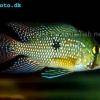 Geophagus
Geophagus  Yellowhump
Yellowhump  Suriname
Suriname  Redhump
Redhump  Red
Red  Dority’s
Dority’s  Argentine
Argentine 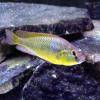 Burton’s
Burton’s  Victoria
Victoria 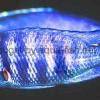 Haplochromis
Haplochromis  Jewel
Jewel  Banded
Banded 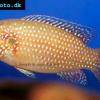 Lifalili
Lifalili  Lowland
Lowland  Texas
Texas  Pantano
Pantano  Severum
Severum  Banded
Banded 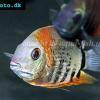 Severum
Severum  Rainbow
Rainbow  Parrot
Parrot  Chocolate
Chocolate  Brown
Brown  Marlieri
Marlieri  Golden
Golden  Striped
Striped  Masked
Masked 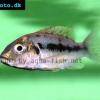 Konye
Konye  Blue
Blue  Trewavas
Trewavas  Electric
Electric  Dwarf
Dwarf  Redbreast
Redbreast  Lamprologus
Lamprologus  Gold
Gold 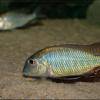 Greenface
Greenface 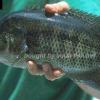 Mayan
Mayan  Aurora
Aurora  Blue
Blue  William’s
William’s 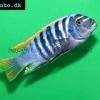 Zebra
Zebra  Malawi
Malawi  Blue
Blue 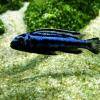 Blue
Blue  Mbuna
Mbuna  Parallel
Parallel  Purple
Purple  Flag
Flag  Bolivian
Bolivian  Ram
Ram  Basket
Basket 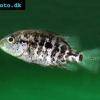 Haitian
Haitian  Zebra
Zebra  Striped
Striped  Neolamprologus
Neolamprologus  Brevis
Brevis  Fairy
Fairy 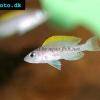 Neolamprologus
Neolamprologus  Cylindricus
Cylindricus  Hecq’s
Hecq’s  Neolamprologus
Neolamprologus  Lemon
Lemon  Mustax
Mustax  Daffodil
Daffodil  Six-bar
Six-bar  Five-bar
Five-bar  Marbled
Marbled 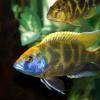 Giraffe
Giraffe  Blue
Blue  Sulphurhead
Sulphurhead  Wolf
Wolf  Jaguar
Jaguar  Blue
Blue  Marakeli
Marakeli  Madagascar
Madagascar  Pinstripe
Pinstripe  Pelmatochromis
Pelmatochromis  Kribensis
Kribensis 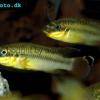 Striped
Striped  Red
Red  Deepwater
Deepwater  Fenestratus
Fenestratus  Nichols’
Nichols’  Southern
Southern  Bumble
Bumble  Demason’s
Demason’s  Slender
Slender  Red
Red  Mbuna
Mbuna  Malawi
Malawi  Kenyi
Kenyi  Powder
Powder  Altum
Altum  Angelfish
Angelfish  Angelfish
Angelfish 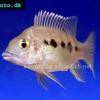 East
East  Juba
Juba  Earth
Earth 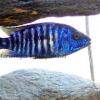 Electric
Electric  Azure
Azure 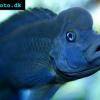 Lionhead
Lionhead  Discus
Discus  Blue
Blue  Red
Red  Zebra
Zebra  Brichard’s
Brichard’s  Blue
Blue  Firemouth
Firemouth  Zebra
Zebra  Yellow
Yellow  Blue
Blue  Dwarf
Dwarf  Blunthead
Blunthead 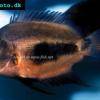 The
The  White
White  Twoband
Twoband  Fenestratus
Fenestratus  Window
Window  Tailbar
Tailbar  Black
Black  Redhead
Redhead 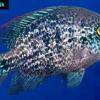 Oaxaca
Oaxaca  Xenotilapia
Xenotilapia